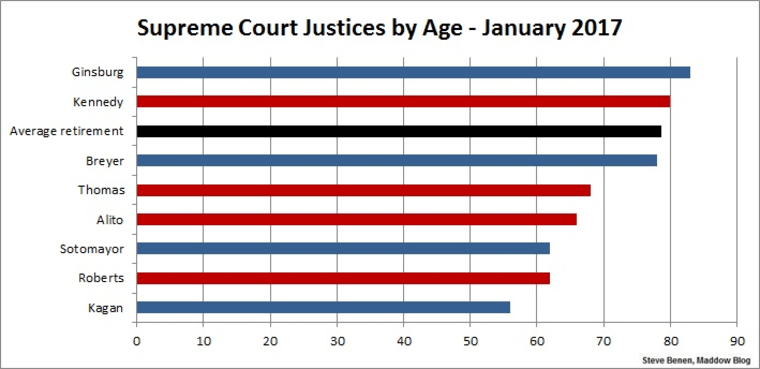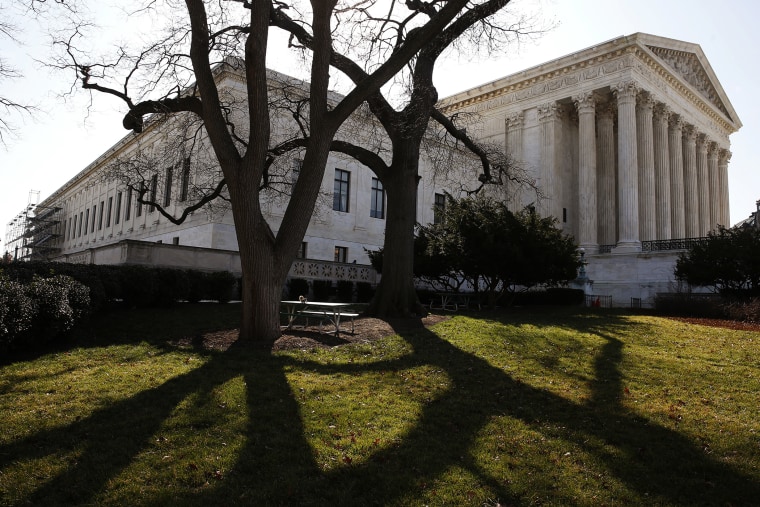A couple of weeks ago, Donald Trump said he expects to name "as many as five" justices to the U.S. Supreme Court in the coming years, each of whom would oppose reproductive rights. In remarks to the NRA on Friday, the presumptive Republican nominee used a similar figure.
[Trump] said he expects the next president to appoint between three and five justices to the high court.
The GOP candidate caused quite a stir last week when he released the names of 11 specific, far-right jurists, explaining that they represent the kind of people -- if not literally the exact people -- he'd consider for Supreme Court vacancies. Reviewing the list satisfied conservatives and gave chills to liberals, which was probably the intended goal.
But is Trump right about his expectations? If elected, should Americans expect him to nominate a literal court majority by himself?
To be sure, five would be an awful lot. Looking back at every president in the last century, only FDR and Eisenhower named that many justices to the high court.
But Trump's prediction isn't completely outlandish. Consider a chart we first put together a year ago:

In the above chart, blue lines refer to justices appointed by Democratic presidents; red lines refer to justices appointed by Republican presidents. (I've removed Justice Antonin Scalia from the image in light of his death.)
So where does that leave us? By Inauguration Day 2017, two justices -- Ruth Bader Ginsburg and Anthony Kennedy -- will be over the age of 80. As we discussed last year, the average retirement age for a justice is 78.7. What's more, Justice Stephen Breyer will be 78.2 years old on the next Inauguration Day, which means he'll reach the average during the next president's first year.
Of course, that doesn't add up to five likely vacancies, but Justice Clarence Thomas will be 68 the day the next president is sworn in, and given his far-right worldview, it wouldn't be too surprising if he at least considered retiring during the next Republican administration. Justice Samuel Alito hasn't been on the bench long, but he'll be 66 on Inauguration Day 2017.
All things considered, it's obviously a guessing game trying to determine exactly how many justices the next president will be able to name. Barring a sudden shift in the Senate this year, we know President Obama's successor will send at least one nominee to Capitol Hill for consideration, but it's hardly unreasonable to believe that total might grow quite a bit -- especially if the next president gets two terms.
In other words, when various observers on the left and right argue that the next president will have an extraordinary opportunity to shape the court's future and quite possibly much of American public life for a generation, it's not empty rhetoric.
Correction: In the chart, I originally showed Ginsburg with a red line, instead of blue. The image is now correct.
